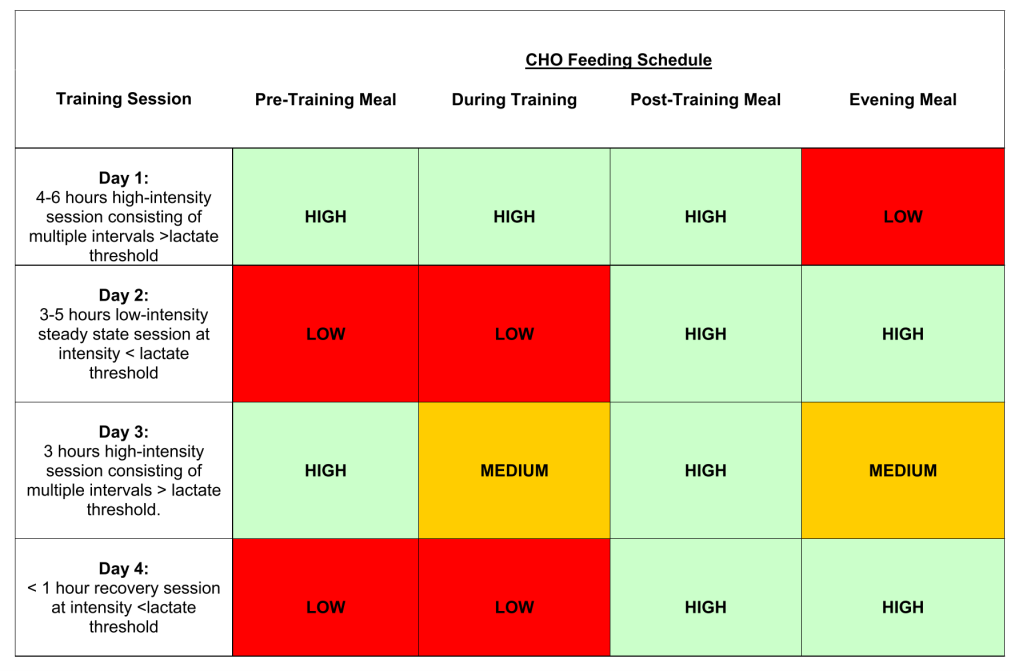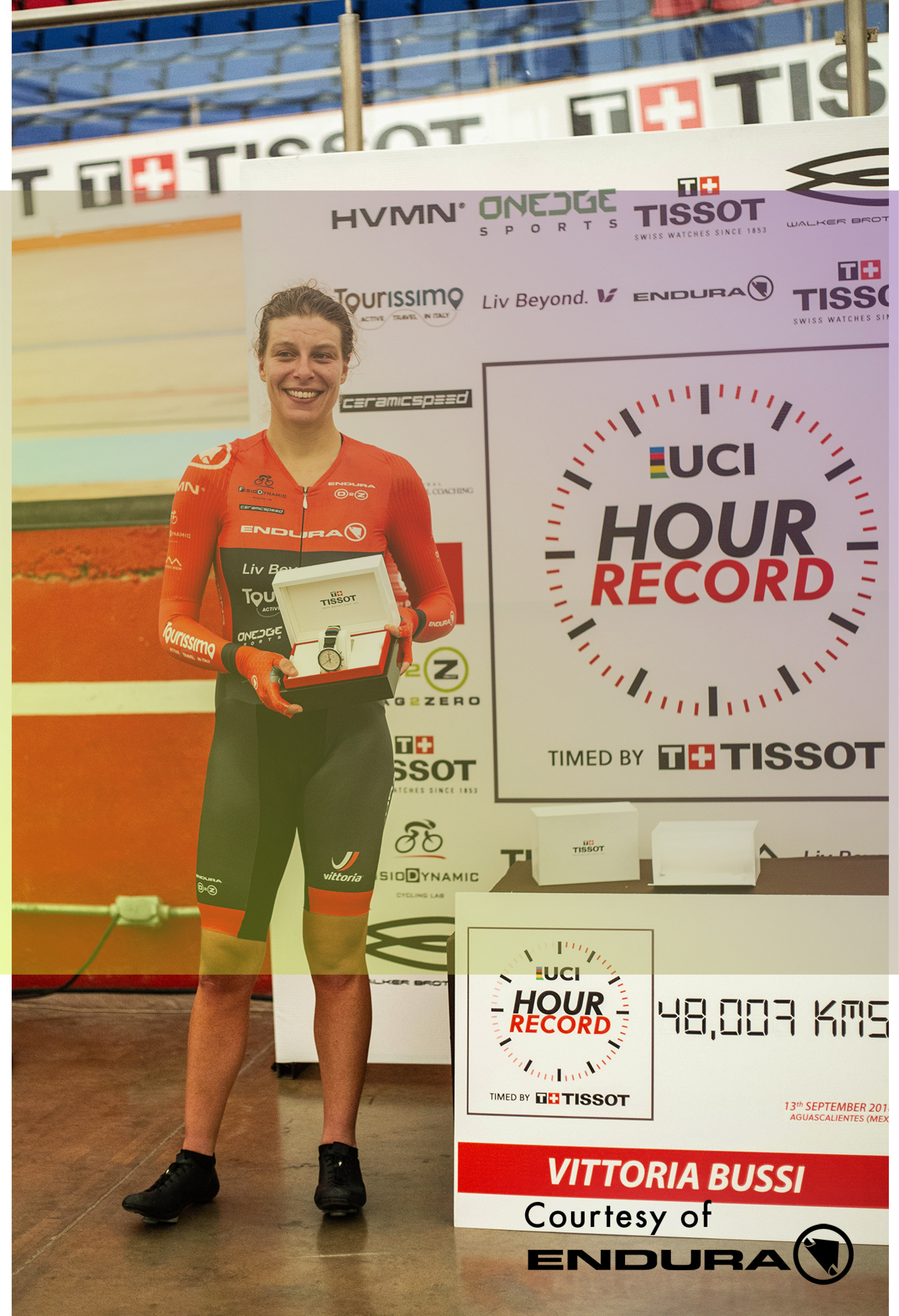Restricted
Carbohydrate training sessions
While race-day cycling
nutrition strategies focus on maximising carbohydrate availability,
certain training adaptations related to aerobic ability can be
enhanced by training with low carbohydrate stores. It is
thought that training with low muscle glycogen availability affects cell
signalling within the body, training adaptations and as a result,
cycling performance.
Cycling nutrition
strategies to train with low carbohydrate availability include:
Training twice per
day – a more intense first session depletes glycogen stores then
restricting carbohydrate in the recovery period between sessions
keeps them low. The second, low glycogen session should be a low to
moderate intensity ride.
Sleep low-train
low – a variation on the first option. An evening training session
depletes glycogen stores and a low carbohydrate dinner and breakfast
keeps them low for the morning ride.
Fasted training –
skipping breakfast, or more correctly eating after the morning
session, reduces liver glycogen and circulating blood glucose rather
than muscle glycogen.
High fat diets –
chronically restricting carbohydrate in the diet will maintain low
muscle and liver glycogen concentrations, but will restrict high
intensity training and may reduce muscle protein synthesis.
Maximising
carbohydrate availability during training and racing.
Previously,
cycling nutrition guidelines were based on the assumption that the
maximum amount of ingested carbohydrates the body could use during exercise was around
60g/hour. While this is true when a single source of carbohydrates,
such as glucose, is used; more recently we have discovered that
multiple sources of carbohydrates, ingested in high loads, can be
used at a much higher rate. In some circumstances the body is able to use 90-120g/hour during endurance exercise (Rowlands et al. 2015). There are now a few commercially available drinks and gels containing mixtures of carbohydrate sources in the 'optimal' ratio for high rates of absorption with minimal chances of gastrointestinal problems. Ingesting such high amounts carbohydrate will spare your limited
muscle and liver glycogen stores, allowing you to cycle further and
faster before fatiguing.
A
word of caution, very high carbohydrate intakes during exercise require
nutritional training to be effective. If you're not used to these
high amounts of carbohydrates you might suffer from an upset stomach.
I would recommend trying any nutritional strategy in training before
competition and bear in mind that it may take a while to adapt to
such a high intake. As such, high carbohydrate training sessions are
an important part of your cycling nutrition strategy to 'train the gut' to utilise what you're eating and drinking (Jeukendrup, 2017).






